Commercial construction companies play a crucial role in shaping our urban landscapes. These companies undertake diverse projects, ranging from office buildings and hotels to retail spaces and industrial parks. Their expertise spans design, build, and fit-out solutions that transform visions into concrete reality.
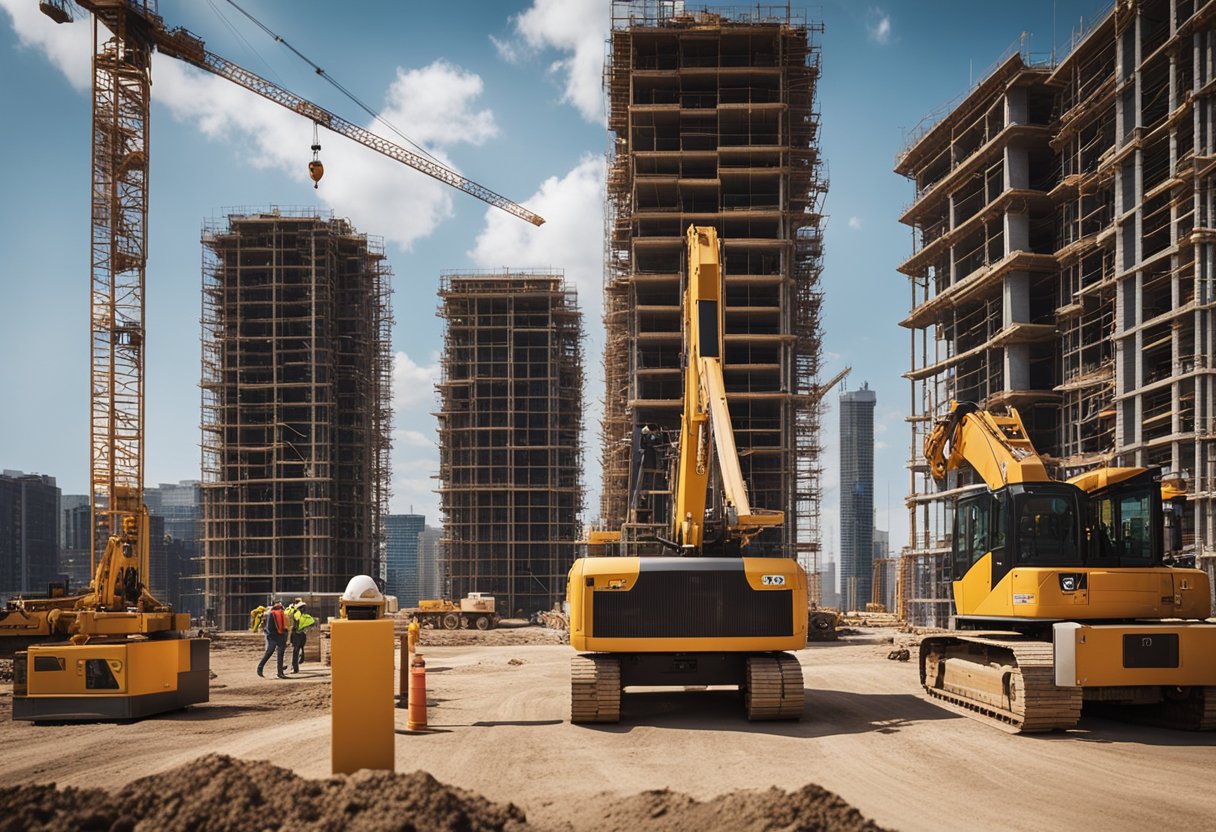
Many firms, such as Marshall in the UK, manage complex developments across sectors like logistics and regeneration. Others, like ATB Commercial Builds, offer comprehensive services from new builds to refurbishments. The capabilities of these companies are vast, addressing the needs of modern businesses and communities.
Key players in the industry, such as GMI Construction Group, distinguish themselves through high-quality, innovative, and technology-driven projects. They often work on large-scale developments, bringing advanced construction techniques and sustainable practices to the forefront, which sets new standards in commercial construction.
Key Takeaways
- Commercial construction companies deliver a wide range of building projects.
- Key industry players leverage technology and sustainable practices.
- These firms handle everything from design to project completion.
History and Evolution of Commercial Construction

Commercial construction has a rich history that reflects the growth of societies. It began with simple structures and evolved into complex buildings.
In ancient times, construction often involved large stone structures. The Great Wall of China and the Roman Colosseum are prime examples. These projects showcased engineering feats and set the stage for future advancements.
During the Industrial Revolution, construction saw a significant shift. The introduction of steel and concrete allowed for taller buildings. Skyscrapers began to appear in cities around the world.
In the late 20th century, companies like Fluor Corporation and Clark Group emerged as leaders in commercial construction. They took on large projects in various sectors, from energy to infrastructure. Fluor is well-known for its work in the energy sector, while Clark Group focuses on commercial and residential projects Fluor Corporation, Clark Group.
In the UK, the transformation has been remarkable. Modern methods and materials have revolutionised the industry. The evolution of building regulations has also played a key role. These changes have ensured safer and more efficient construction practices. For example, the study on UK construction highlighted the transition from traditional to modern methods, emphasising safety and efficiency study on UK construction.
Commercial construction continues to adapt to new technologies and materials. Innovations like sustainable materials and smart buildings are shaping the future.
Overall, the history and evolution of commercial construction demonstrate a continuous drive for improvement and adaptation. The industry’s ability to innovate ensures it remains a cornerstone of modern society.
Types of Commercial Construction Projects
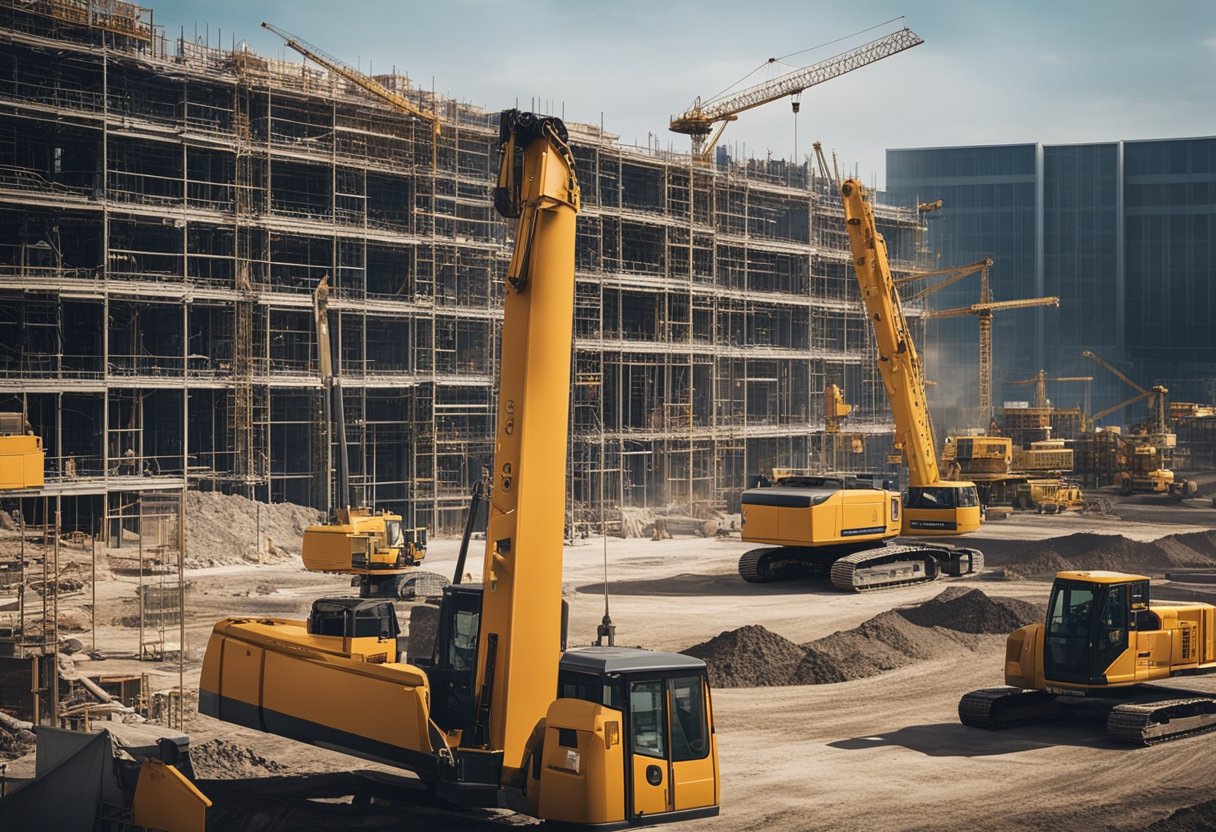
Commercial construction projects are diverse and cater to different needs, including retail spaces, residential and mixed-use developments, healthcare facilities, and more.
Retail Units
Retail units include shopping malls, grocery stores, and standalone shops. These projects focus on creating spaces that attract customers and provide a comfortable shopping experience. Flexibility in design is crucial to accommodate different store layouts and future modifications. Retail construction often features large open spaces, specialised lighting, and ample parking.
Projects must comply with specific regulations related to customer safety and accessibility. Fire safety measures, evacuation routes, and security systems are essential. Managing costs while maintaining high-quality finishes is a key challenge in retail construction. Efficient project timelines ensure stores can open promptly to start generating revenue.
Office Buildings
Office buildings range from small local offices to large corporate headquarters. Key considerations include maximising usable space, providing adequate natural light, and ensuring efficient HVAC systems. Modern office designs often feature open-plan areas, collaborative spaces, and advanced IT infrastructure.
Flexibility is important to allow for reconfiguration as business needs change. Sustainable construction materials and energy-efficient technologies are becoming increasingly significant in office developments. Projects must meet building codes and workplace safety regulations. Accessibility and employee comfort are paramount, often dictating the choice of materials and finishes.
Hotels and Leisure Facilities
Hotels and leisure facilities include hotels, resorts, and sports complexes. These projects aim to create inviting and comfortable environments for guests. High standards of aesthetics, functionality, and safety are critical. Hotels need functional layouts for services like housekeeping, kitchens, and maintenance.
Leisure projects often include facilities like swimming pools, gyms, and spas, requiring specialised construction expertise. Quality finishes, durability, and soundproofing are essential for a pleasant guest experience. Attention to detail during construction ensures facilities meet expected comfort and luxury standards. Effective project management ensures timely completion, allowing facilities to operate without delay.
Industrial Developments
Industrial developments encompass warehouses, factories, and distribution centres. These projects require robust structures to support heavy equipment and large-scale operations. Key considerations include optimising space for storage, seamless workflow, and efficient loading and unloading areas.
Safety is a primary concern, with strict adherence to occupational health and safety regulations. Industrial buildings often feature advanced ventilation and fire suppression systems. Durability and cost-efficiency in materials used are important to manage construction budgets while meeting operational needs. These projects also consider future expansion capabilities to accommodate business growth.
Residential and Mixed-Use Builds
Residential and mixed-use builds combine living spaces with commercial elements like shops, offices, and sometimes leisure facilities. These projects focus on maximising land use and creating integrated communities. Design flexibility is important to cater to diverse residential needs and commercial functionalities.
Key aspects include ensuring privacy, soundproofing, and providing common amenities like gyms, parks, and lounges. Sustainable materials and energy-efficient systems are increasingly popular. Safety, accessibility, and compliance with residential and commercial building codes are paramount. Efficient use of space without compromising on quality or comfort remains a common challenge in these multifaceted projects.
Healthcare Facilities
Healthcare facilities encompass hospitals, clinics, and specialised medical centres. These projects are complex and must adhere to stringent health regulations and standards. Design prioritises patient safety, privacy, and comfort. Efficient layouts for patient flow, emergency response, and medical staff must be carefully planned.
Healthcare construction often involves specific requirements for sterilisation, advanced electrical systems, and specialised equipment installations. Durability, ease of maintenance, and hygiene are critical factors. Projects must balance the need for advanced medical technology with a soothing environment for patients. Timely and efficient construction is essential to meet the increasing demand for healthcare services.
Key Players in the Commercial Construction Industry
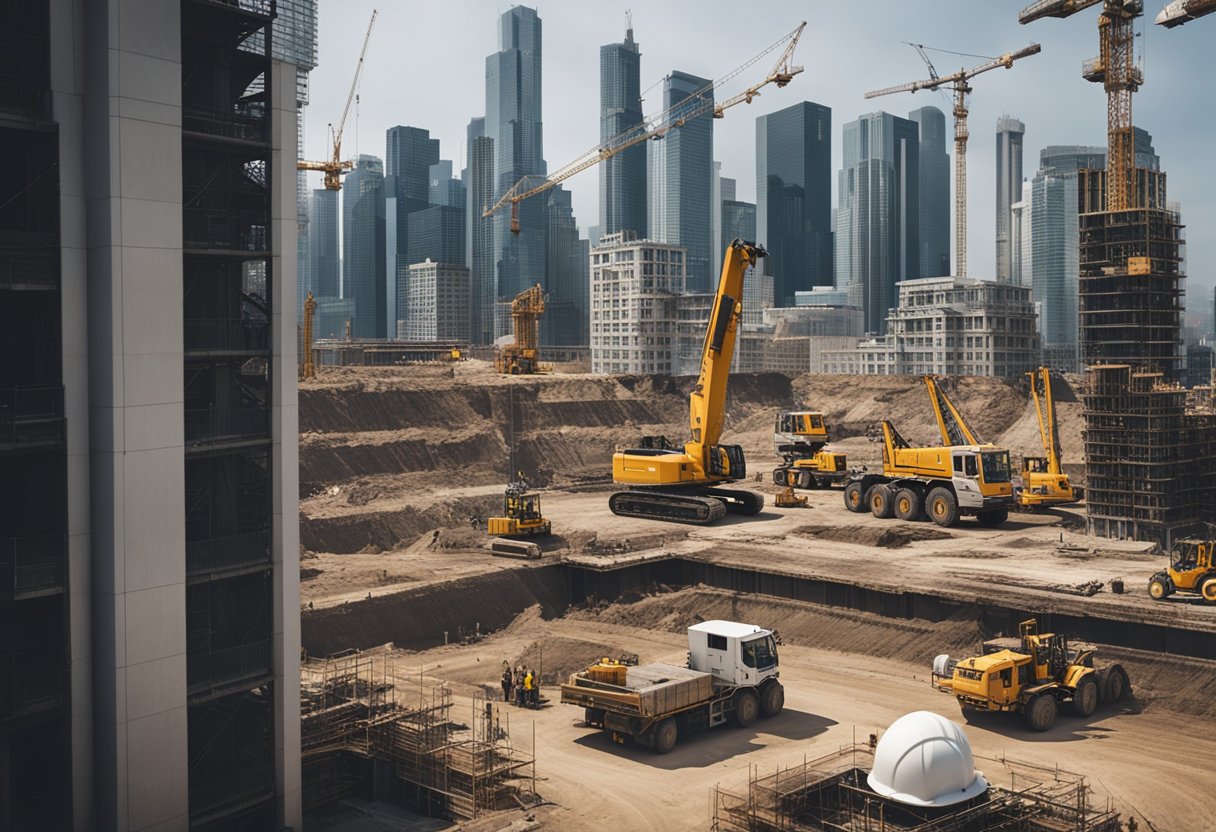
The commercial construction industry involves a variety of professionals, each playing a distinct role to ensure the successful completion of projects. These key players include main contractors, subcontractors, suppliers, and consultants, each contributing specific expertise.
Main Contractors
Main contractors, also known as general contractors, oversee the construction project from start to finish. They manage everything from hiring labour to sourcing materials. Major players like Kier and Balfour Beatty are well-known in the UK for handling large-scale projects.
These contractors ensure that the project adheres to schedule, budget, and safety regulations. They coordinate with various stakeholders, including clients, architects, and subcontractors. By acting as the central point of communication, they streamline processes and resolve issues that arise during construction.
Main contractors often have established relationships with material suppliers and subcontractors, which helps in negotiating better prices and ensuring timely delivery. Their experience and resources are critical in managing complex commercial projects.
Subcontractors
Subcontractors are specialised professionals hired by main contractors to perform specific tasks within a construction project. These tasks can include electrical work, plumbing, painting, and more. Companies like ATB Commercial Builds often take up such roles, bringing their specialised skills to the table.
They are crucial for delivering quality in their areas of expertise, ensuring that each component of the project meets high standards. Their work is typically governed by strict contracts that outline deadlines, scope of work, and payment terms.
Subcontractors’ efficiency and reliability significantly impact the overall timeline and quality of the construction project. They allow main contractors to focus on broader project management while ensuring that specialised tasks are executed professionally.
Suppliers
Suppliers provide the materials and equipment necessary for the construction process. They include companies that supply building materials like concrete, steel, and timber, as well as those providing machinery and tools. Firms such as Glenigan are vital in this role, supplying essential data and market insights.
Reliable suppliers contribute to the smooth running of a project by ensuring that materials arrive on-site as scheduled. They maintain quality control to provide materials that meet regulatory standards and project specifications.
Strong relationships with suppliers enable main contractors to source materials at competitive rates, which can lead to cost savings and reduced project delays.
Consultants
Consultants offer expert advice and technical expertise throughout the construction process. This group includes architects, engineers, financial advisors, and project managers. They play a pivotal role in planning and design, ensuring that projects are feasible and comply with all regulations and standards.
Consultants like those from established firms provide insights that help in decision-making and risk management. They conduct feasibility studies, design project plans, and oversee construction to ensure everything meets the project’s objectives.
Consultants’ input is essential in addressing unforeseen challenges and mitigating risks, contributing to the smooth execution and successful completion of construction projects.
Overview of Commercial Construction Services
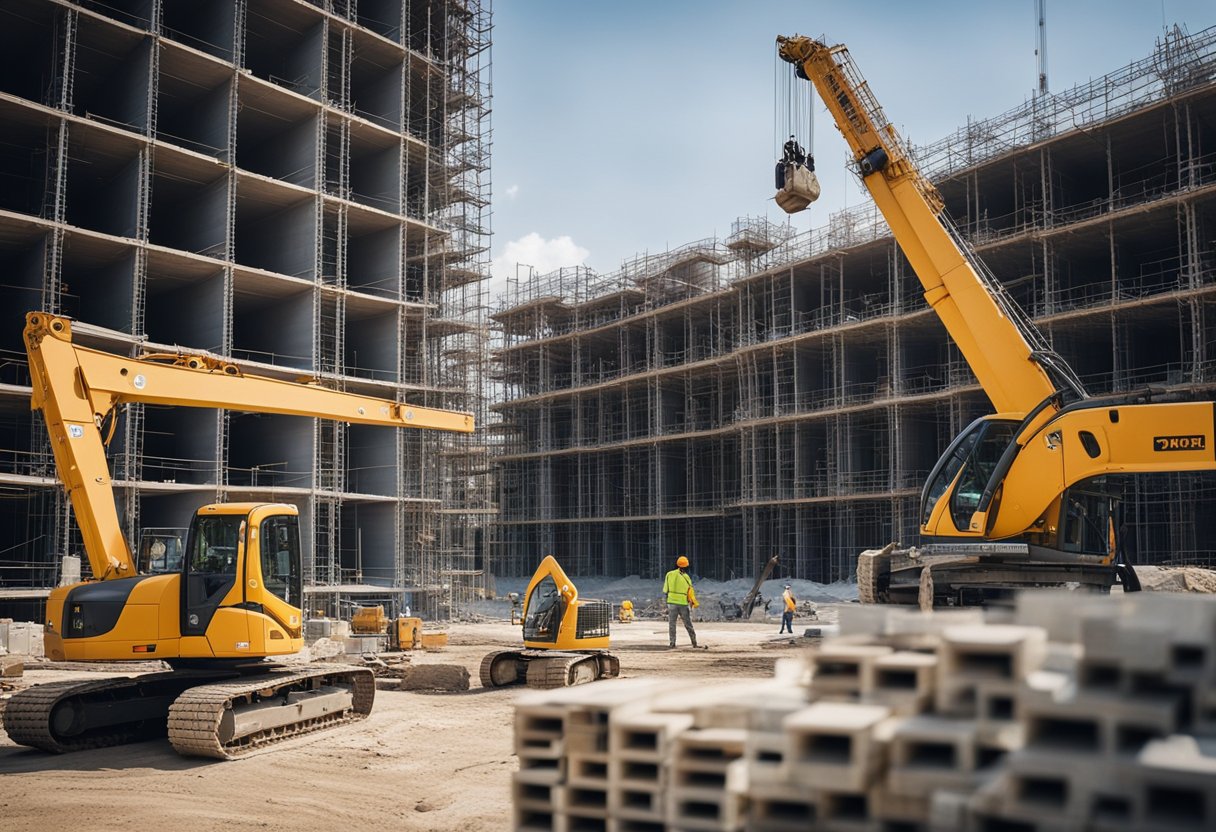
Commercial construction companies offer a range of services that ensure projects are completed efficiently and professionally. These services include design and planning, construction management, building refurbishment, small works and extensions, and project management.
Design and Planning
Design and planning are crucial steps in any commercial construction project. This phase involves creating architectural designs, selecting materials, and defining the project scope. Companies often collaborate with architects and engineers to develop blueprints that meet regulatory standards and client needs.
Proper planning helps in cost estimation and scheduling. Detailed design documents ensure all parties understand the project requirements, reducing miscommunication. Advanced tools like CAD software are commonly used to create precise and scalable models. The design and planning stage sets the foundation for a successful construction project.
Construction Management
Construction management is essential for overseeing the execution of the project. It includes coordinating with subcontractors, ensuring compliance with safety regulations, and managing the project timeline. Effective construction management ensures that projects stay on track and within budget.
Managers frequently use software to monitor the project’s progress and to manage resources efficiently. They also handle unexpected issues that arise during construction, providing solutions to keep the project moving forward. This service integrates all aspects of the construction process, from resource allocation to quality control.
Building Refurbishment
Building refurbishment involves upgrading and modernising existing structures. This service is often sought by businesses looking to improve their facilities without the cost of new construction. Refurbishments can range from minor cosmetic updates to major structural changes.
Companies offering refurbishment services ensure that the work complies with current building codes. Refurbishments can enhance the functionality and appearance of a building, extending its useful life. This process might include updating electrical systems, improving insulation, or redesigning interior spaces.
Small Works and Extensions
Small works and extensions cover minor construction tasks and additions to existing buildings. These tasks can include anything from installing new fixtures to building extra rooms or expanding office spaces. Commercial construction companies often handle these projects with the same level of detail as larger jobs.
Small works and extensions require careful planning and execution to integrate seamlessly with existing structures. These projects are typically less disruptive to ongoing operations and can be completed more quickly than full-scale construction projects. They provide a cost-effective way to enhance or expand a commercial property.
Project Management Services
Project management services encompass the overall coordination and administration of construction projects. This includes budgeting, scheduling, and communication between all stakeholders. Good project management ensures that every phase of the construction process is aligned with the client’s goals.
Project managers use various tools and techniques to track the project’s progress and manage risks. They play a critical role in keeping the construction on schedule and within budget while ensuring high-quality standards. Their expertise is vital in navigating complex projects and delivering successful outcomes for clients.
Construction Techniques and Innovations
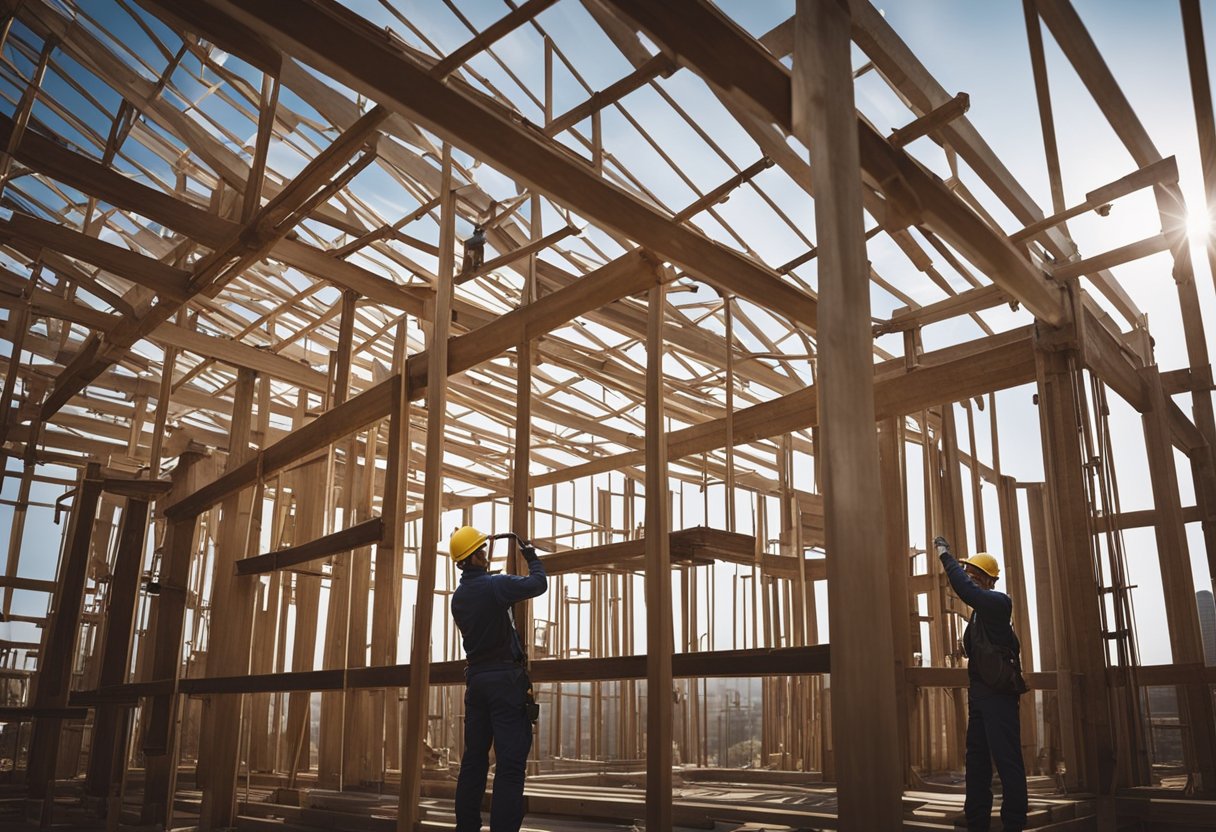
Modular Construction is transforming the construction industry. Using factory-built sections, builders can assemble structures swiftly on-site. This method not only enhances quality by reducing human error but also lowers construction costs.
Prefabrication involves manufacturing parts off-site in a controlled setting, ensuring precision and high engineering standards. This technique speeds up project timelines and improves overall quality.
3D Printing is gaining traction in the construction sector. By printing building components layer by layer, it allows for customisation and reduces waste. This technology ensures engineering precision and can create complex structures that traditional methods cannot achieve.
Artificial Intelligence (AI) and Machine Learning are being used to predict project outcomes, manage resources, and optimise schedules. This technology helps in making data-driven decisions, enhancing efficiency and quality.
Virtual Reality (VR) and Augmented Reality (AR) allow architects and engineers to visualise projects before they are built. These technologies aid in identifying potential issues early, ensuring better quality and design accuracy.
Building Information Modelling (BIM) is a digital representation of the physical and functional characteristics of a facility. It supports innovation by allowing for improved collaboration among all stakeholders, thus maintaining high quality standards.
Drones and UAVs (Unmanned Aerial Vehicles) are utilised for site surveying and monitoring. These devices provide real-time data, allowing for better project management and engineering oversight.
Sensor Data and the Internet of Things (IoT) play significant roles in monitoring building conditions, ensuring safety, and maintaining high quality throughout the construction process. They provide real-time updates that can prevent costly errors.
Geographical Influence on Commercial Construction

Commercial construction in the UK varies significantly based on location. Key urban areas like London and Manchester, along with regional differences in Wales and England, create unique challenges and opportunities for construction companies.
Construction in London
London stands as a prime example of a bustling hub for commercial construction. Projects here often focus on high-rise buildings, corporate offices, and mixed-use developments. The city’s dense population and limited space mandate creative architectural solutions. Companies must navigate strict planning regulations and sustainability standards. Risk identification techniques for international contracting projects become crucial due to the high stakes involved in such a competitive market.
Additionally, London’s status as a global financial centre attracts significant international investments, driving demand for state-of-the-art commercial facilities. The construction companies working in London benefit from a steady stream of projects but also face intense competition and higher operational costs.
Construction Trends in Wales
In Wales, the commercial construction scene is influenced by economic growth and regional policies. Welsh cities like Cardiff and Swansea have seen an uptick in development focusing on infrastructure and commercial hubs. The government’s push for sustainable building practices has led to an increase in green buildings.
Economic initiatives have encouraged technology parks and business centres, aiming to modernise the region’s commercial landscape. The varying topography and weather conditions in Wales can pose logistical challenges, affecting construction timelines and costs. Companies must adjust strategies to handle these regional specifics effectively.
Regional Construction Variations in England
Across England, commercial construction varies widely between regions such as the North, Midlands, South, and West. In Manchester, there’s been significant growth in tech and media sectors, fuelling the demand for modern office spaces and cultural venues. The city’s industrial past also means many projects involve converting old warehouses into commercial complexes.
Regions like the Midlands focus on manufacturing and logistics, requiring large-scale facilities. The South, with cities like Brighton, sees more tourism-oriented commercial construction, such as hotels and entertainment venues. Each region’s economic focus and available space dictate distinct construction types and approaches.
This diversity across England requires companies to adapt their practices and resources to fit the specific demands of each area.
Economic and Market Analysis

Commercial construction companies in the UK face unique market conditions that impact their operations. Understanding the industry trends, managing costs, and building strong client relationships are crucial for business success.
Construction Industry Analysis
The UK construction industry has seen significant growth, with market size estimated at USD 398.68 billion in 2024. It is expected to reach USD 466.57 billion by 2029, growing at a CAGR of 3.19%. This increase is driven by rising building activities and commercial ventures.
Government policies and the push for net zero carbon emissions are also shaping the industry. Investments in sustainable construction are becoming integral, influencing market trends and opportunities for businesses.
Output values and inflation have a direct impact on commercial construction companies. Monitoring these metrics is vital for staying competitive and adapting to market changes. Companies need to remain agile and responsive to economic fluctuations to maintain growth.
Profitability and Cost Management
Profitability in commercial construction hinges on effective cost management. Companies must balance operational costs with revenue to ensure sustained margins. Keeping track of material prices, labour costs, and overheads is essential.
Analysing profitability involves scrutinising project budgets and identifying areas for cost savings. Glenigan Customer data is invaluable for benchmark comparisons and setting financial targets. Efficient resource allocation and waste reduction can enhance profitability.
Adopting technology and innovative construction methods also improves cost efficiency. By integrating advanced tools and techniques, businesses can streamline processes and reduce expenses. Moreover, regular financial reviews help to identify and mitigate risks, ensuring steady cash flow.
Client and Investor Relationships
Client and investor relationships are critical for commercial construction companies. Engaging with clients through transparent communication and delivering quality projects builds trust and long-term partnerships. Satisfied clients lead to repeat business and referrals, bolstering company reputation.
Investors seek reliable returns, making effective communication and performance tracking key. Highlighting successful projects and financial stability can attract investment. Companies that demonstrate a strong track record in profit and delivery are more appealing to stakeholders.
Utilising robust relationship management strategies enables businesses to foster loyalty and secure continuous support. Regular updates, thorough reports, and addressing concerns promptly strengthens these ties, promoting ongoing collaboration and growth. Engaging with both clients and investors through these practices can drive success in the competitive construction market.
Regulatory Environment and Compliance
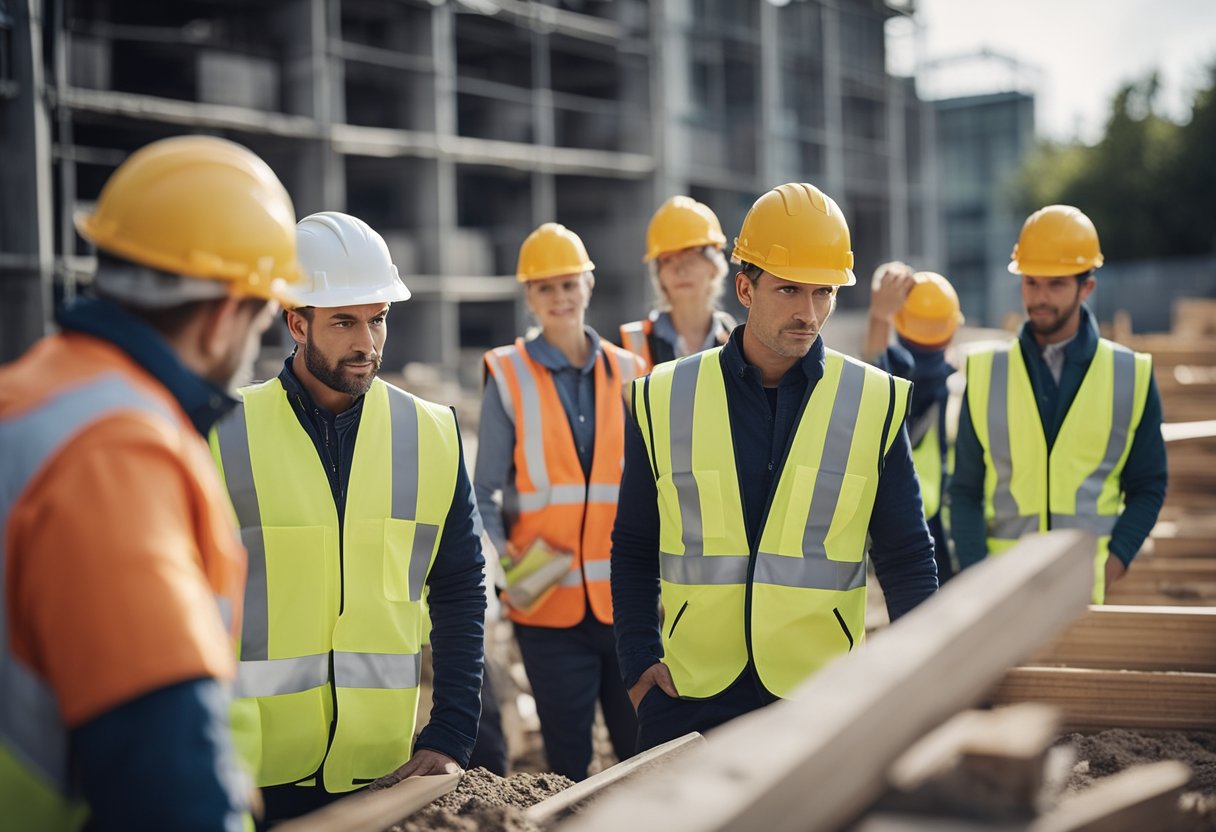
The regulatory landscape for commercial construction companies in the UK is diverse and rigorous. Companies must navigate numerous regulations such as the Environmental Protection Act 1990 and the Environmental Permitting (England and Wales) Regulations 2016. These laws mandate permits for activities like waste disposal, water discharge, and air emissions. It’s crucial for companies to obtain the necessary licences to remain compliant.
Key Regulations and Standards:
- Environmental Protection Act 1990
- Environmental Permitting (England and Wales) Regulations 2016
- Construction Products Regulation (CPR)
- BS 10500 for compliance
Construction firms are also expected to adhere to workplace safety standards. This includes compliance with health and safety regulations, ensuring that work environments are safe for all employees. Regular updates to these standards make it essential for companies to stay informed and proactive.
Importance of Contracts
Contracts play a crucial role in regulatory compliance. They establish agreements that outline responsibilities and compliance requirements. Ensuring that contracts are clear and comprehensive helps prevent legal issues and misunderstandings.
Many construction companies benefit from Common Data Environments (CDEs), which assist in managing documents and maintaining compliance with various regulations. By using CDEs, companies can streamline their processes and ensure they meet regulatory requirements efficiently.
Staying compliant not only protects the environment and ensures safety but also upholds ethical business practices. Continuous monitoring and adapting to regulatory changes are essential for successful operation in the construction industry.
For more detailed guidance, you can explore resources like the Navigating Regulatory Compliance Guide or learn more about Coping with Compliance in the Construction Industry.
Procurement and Tendering Processes

Procurement in commercial construction involves acquiring goods, services, and works. This process is key to ensuring projects are completed efficiently and cost-effectively. It typically includes several steps: defining needs, researching suppliers, and negotiating contracts.
Tendering is a critical part of procurement. Commercial construction companies issue invitations to tender (ITTs) to prospective suppliers. This allows suppliers to submit bids to provide the required services or goods.
Types of Tenders:
- Open Tendering: Any interested supplier can submit a bid.
- Selective Tendering: Only pre-selected suppliers are invited to bid.
- Negotiated Tendering: Direct negotiations with one or more suppliers.
Early Contractor Involvement (ECI) is often used to improve project outcomes. In ECI, contractors are involved early in the design and planning stages to provide expertise and feedback.
Key Steps in the Tendering Process:
- Invitation to Tender (ITT): Clients issue specifications and requirements.
- Bid Submission: Prospective contractors submit their proposals.
- Evaluation: Bids are reviewed for compliance and value for money.
- Contract Award: The best bid is selected, and a contract is signed.
Important Considerations:
- Cost: Ensuring competitive pricing without compromising quality.
- Timeline: Meeting project deadlines.
- Quality: Adhering to standards and specifications.
In larger projects, the procurement team might include representatives from health and safety, human resources, and quality management, along with senior management for high-value contracts (learn more). This ensures a comprehensive review and selection process.
Sustainability and Environmental Considerations
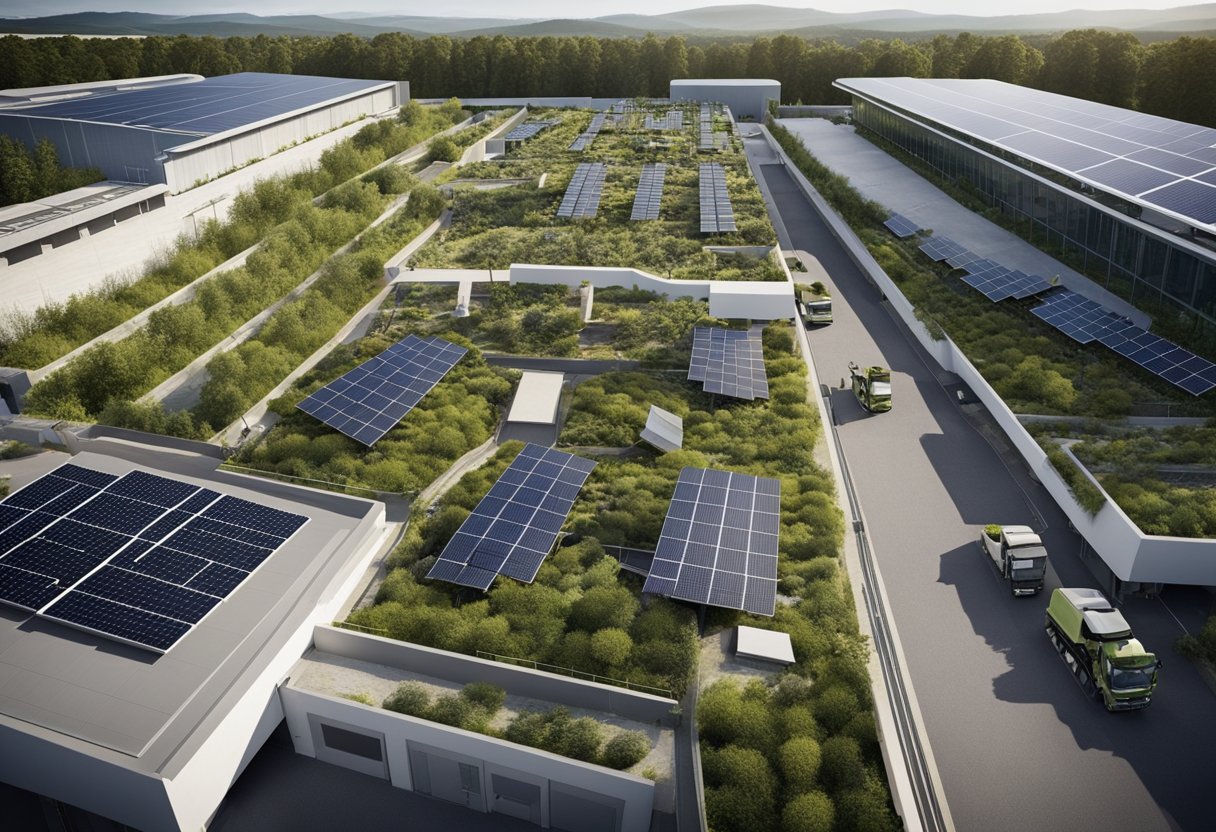
Sustainability in commercial construction is crucial. Companies must consider both environmental and societal impacts.
Eco-friendly practices are essential. Using renewable materials and reducing waste align with sustainable goals. Techniques like recycling construction materials help minimise waste.
Green building is another focus. Designing buildings that consume less energy and water is vital. Materials with lower embodied energy are preferred. Material selection can influence sustainability by using components produced with less energy.
Key aspects include:
- Water conservation: Implementing systems to reduce water use during construction and the building’s life cycle.
- Energy efficiency: Employing energy-efficient designs and renewable energy sources.
- Durable materials: Choosing long-lasting materials to reduce the need for replacements.
These steps help reduce the carbon footprint of construction projects.
By focusing on sustainability, commercial construction companies can create buildings that are better for the environment and society.
Challenges and Risks in Commercial Construction
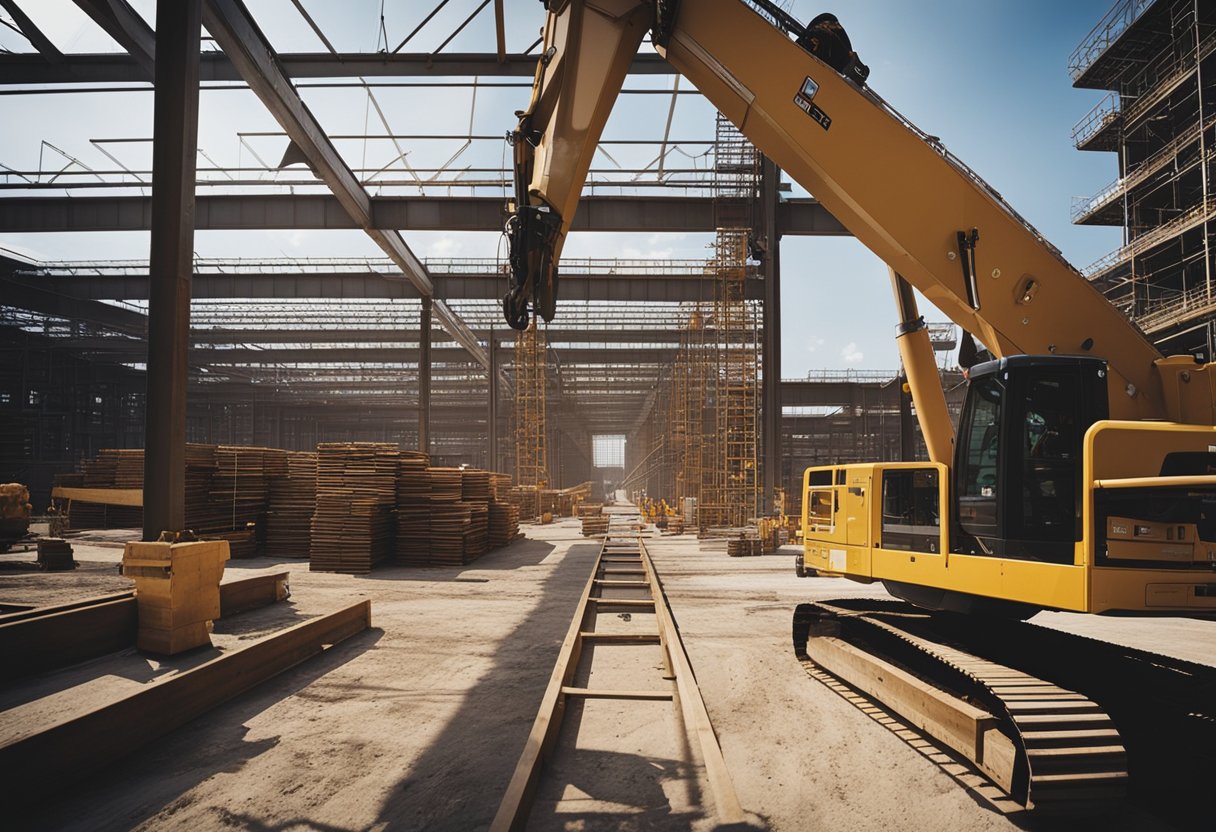
Risk Management is crucial in commercial construction. Without it, projects can face unexpected problems. Effective strategies involve regular risk assessments and detailed planning. This helps identify potential issues early.
Supply Chain Disruptions continue to affect the industry. Delays in material shipments can lead to project slowdowns. Companies need to diversify their suppliers and maintain buffer stock to mitigate these risks.
Project Delays are a common problem. Delays can stem from various sources including bad weather, regulatory changes, and unforeseen site conditions. Proper scheduling and contingency planning are essential to manage these delays.
Cost Overruns can significantly impact project viability. Reasons include inaccurate budget estimates, unexpected site conditions, and price increases for materials. Regular financial monitoring and the use of cost-control measures are vital.
Cybersecurity Threats are emerging as a significant risk. With more reliance on digital tools, construction firms must invest in robust cybersecurity measures to protect sensitive data. Regular training and updated security protocols are necessary.
Safety Concerns remain a top priority. Ensuring worker safety through improved training, regular safety audits, and compliance with safety regulations helps reduce accidents on site.
Economic and Political Factors also play a role. Changes in political climates or economic downturns can affect funding and project timelines. Companies need to stay informed about these changes and plan accordingly.
Many construction companies, nearly 49%, are planning to improve their safety plans over the next year, showing a proactive approach to risk management. This includes better training and stricter adherence to safety protocols.
Addressing these challenges requires diligent planning, continuous monitoring, and the ability to adapt to changing conditions in the commercial construction industry.
Client Services and Relationship Management
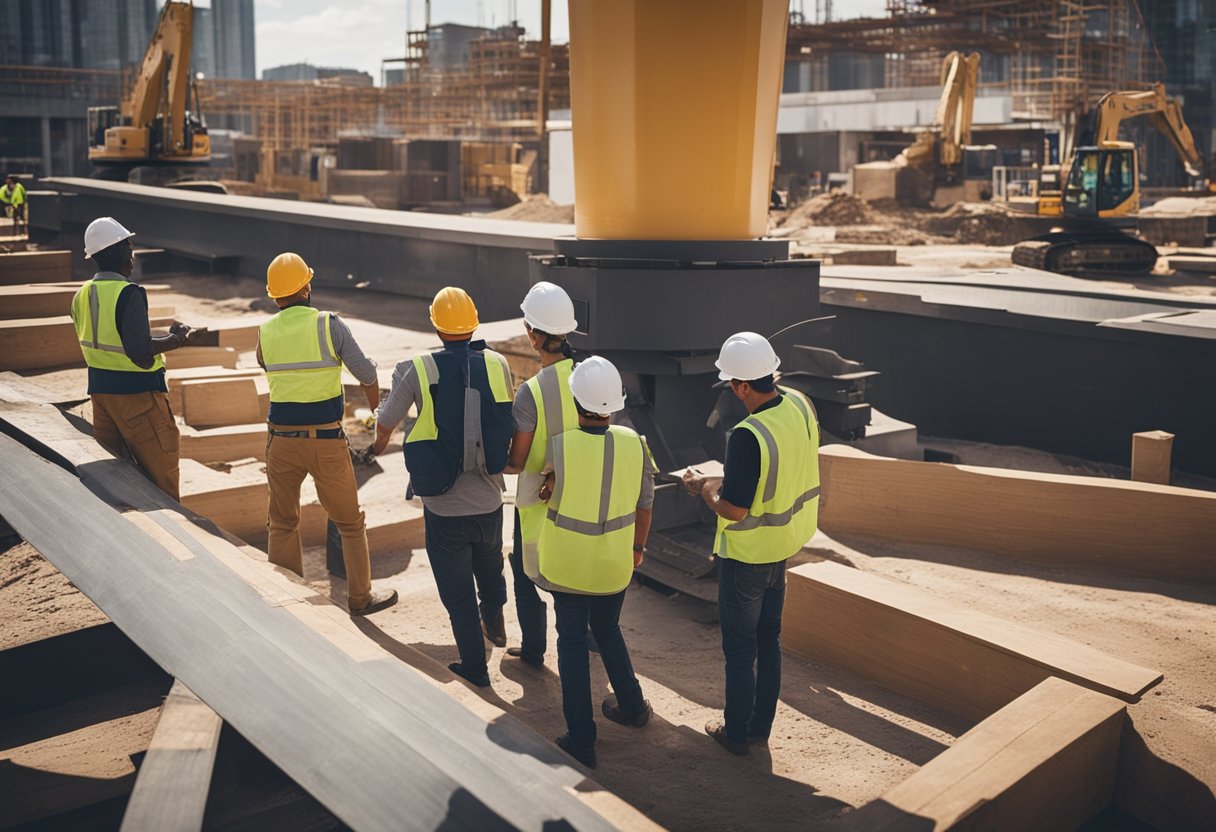
Proper client services and effective relationship management are essential for commercial construction companies. These companies must ensure they provide top-notch customer service to maintain strong relationships with their clients.
Using a Customer Relationship Management (CRM) system tailored for the construction industry can greatly enhance these efforts. A good CRM helps companies capitalise on customer data, streamline their sales, and convert leads into customers faster.
Key features of a construction CRM include:
- Contact Management: Storing and organising client information.
- Lead Scoring: Identifying the potential of leads converting into customers.
- Sales Pipelines: Tracking the progress of deals from start to finish.
Client retention is another crucial aspect. By staying connected with clients and ensuring their needs are met promptly, companies can foster long-term business relationships.
A construction-specific CRM system, like JobNimbus, can offer industry-specific tools that cater to unique needs, such as roofing contractors. This helps in *strengthening client relationships and ensuring repeated business.
Utilising advanced automation tools offered by CRMs like Zoho CRM can further enhance customer service by automating routine tasks and allowing the team to focus more on personalised client interactions.
Construction companies benefit from a single source of truth where multiple departments can collaborate effectively on a single project or client, as highlighted by BuildOps.
By implementing proper client services and relationship management strategies, commercial construction companies can not only boost customer satisfaction but also drive sales growth.
Case Studies and Notable Projects
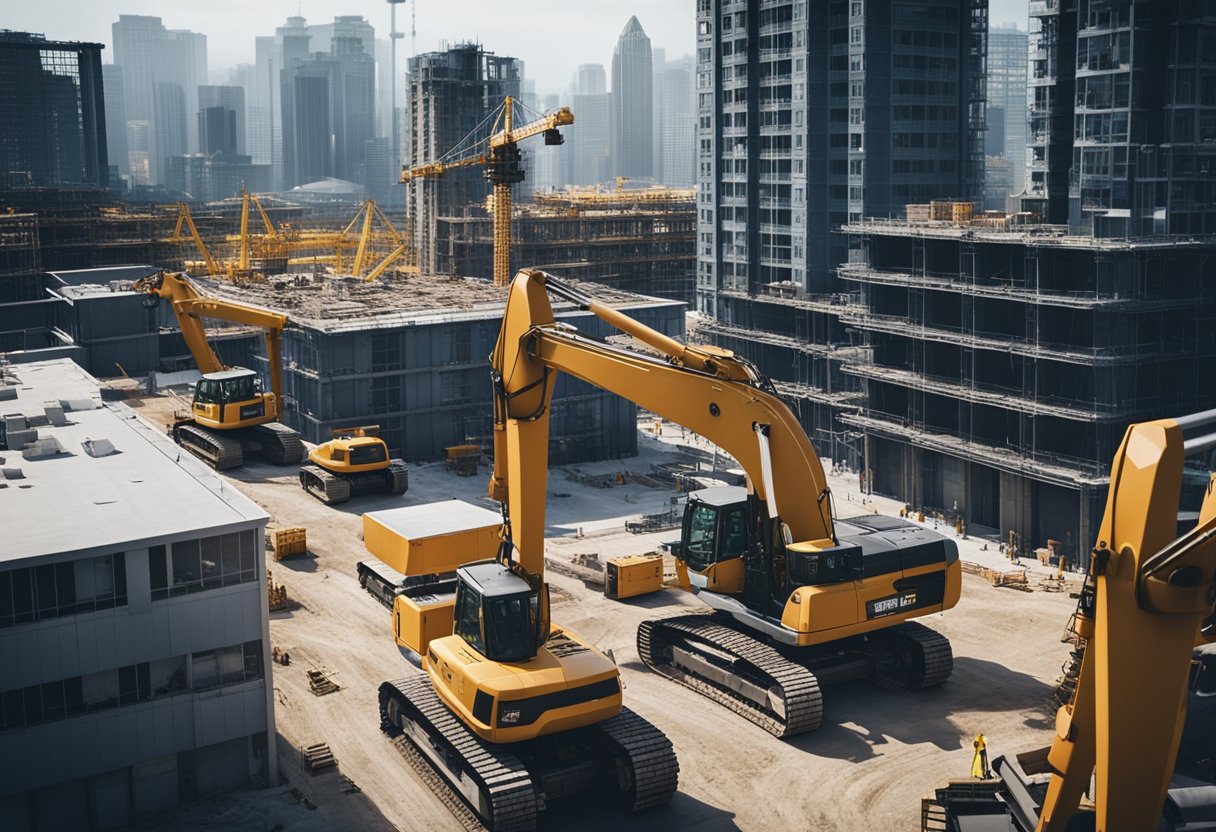
Commercial construction companies manage a variety of impressive projects across the UK. These case studies highlight some of the notable projects in the commercial sector.
Morgan Sindall Construction is known for creating inspiring places that enhance communities. They have an extensive portfolio, which includes educational, residential, and commercial schemes. Examples include state-of-the-art office buildings and community centres that are designed to serve local needs. More details can be found here.
Connor Construction has a diverse project portfolio ranging from hotels to commercial buildings. Notable projects include high-end hotels and major commercial properties throughout London. Their commitment to quality and innovation is evident in their projects. Explore their work here.
Princebuild Ltd has completed numerous construction, refurbishment, and maintenance projects. They have worked on significant commercial developments such as warehouses and office refurbishments. For example, the construction of a new warehouse at Jewson Ruislip valued at £870,000. Discover more about their projects here.
BIM+ Projects feature various case studies that showcase the use of Building Information Modelling (BIM) in commercial construction. Projects from 2020 and 2021 include hospitals, housing, and hotels. These studies highlight how technology has been integral in delivering complex projects efficiently. Information on these projects can be accessed here.
These case studies demonstrate the exceptional work done by commercial construction companies in various sectors, emphasising their role in property development and large-scale construction projects.
Future Trends and Industry Outlook
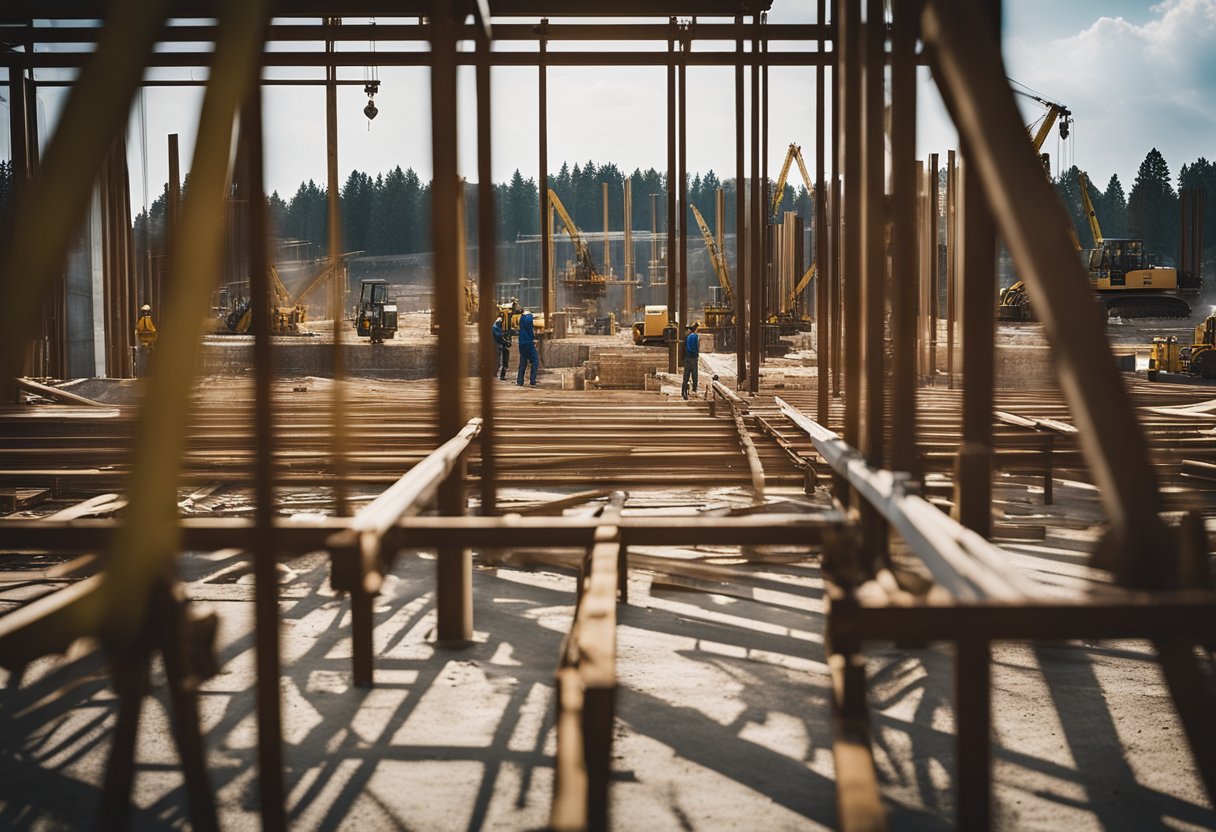
Construction companies are adapting to rapid changes and advancements in technology. Innovation is key, with many firms investing in digital tools like Building Information Modelling (BIM) and drones to improve efficiency and accuracy.
Automation is another trend to watch. Robotics and automated machinery are becoming more common on construction sites, helping to reduce labour costs and increase precision.
Sustainability is gaining importance. More projects now focus on eco-friendly materials and energy-efficient designs. This is driven by both regulatory requirements and a growing demand for green buildings from clients.
The sector is also seeing an increase in prefabrication. Many companies are now using off-site construction methods to speed up project timelines and reduce waste.
Market Predictions
The UK construction market is expected to see growth in 2024 and 2025, with a predicted rise of 8% and 7% respectively. This growth is supported by larger project starts and a strengthened UK economy.
Meanwhile, the global construction industry is forecast to grow significantly with a 17.2% compound annual growth rate (CAGR) from 2023 to 2028.
Emerging Markets
Labour shortages are pushing up wages, with average hourly wages increasing by 5.2% year over year as of August 2023, and this upward pressure is expected to continue in 2024.
Overall, the future of commercial construction is bright, driven by innovation, growth in emerging markets, and evolving industry trends.
Frequently Asked Questions
Choosing the right commercial construction company involves evaluating several factors, including certifications and industry trends. Understanding the differences between commercial and residential project management is also essential.
What are the factors to consider when selecting a commercial construction company?
When selecting a commercial construction company, it is important to look at their experience and track record. Check their portfolio to see past projects. Client reviews and testimonials provide insights into their reliability and work quality. Consider their ability to handle projects of similar scale and complexity.
How does commercial construction project management differ from residential?
Commercial construction project management involves larger-scale projects and often more complex logistics. These projects usually have stricter timelines and budgets. Coordination among multiple stakeholders, including architects, engineers, and local authorities, is more intensive. Commercial projects also have higher regulatory compliance requirements compared to residential ones.
What certifications are important for a commercial construction company to have?
Key certifications for a commercial construction company include ISO certifications for quality management and environmental management. They should also have necessary government certifications and licenses to operate legally. Industry-specific accreditations, like those from construction associations, indicate a commitment to high standards.
What are the key trends currently influencing the commercial construction industry?
Several trends are shaping the commercial construction industry today. These include the integration of technology such as Building Information Modeling (BIM) and the use of advanced construction materials. Sustainability practices are also gaining importance, with many companies adopting green building standards. Additionally, there is a focus on improving safety protocols on construction sites.
How does sustainability impact the construction practices of commercial builders?
Sustainability has a significant impact on construction practices. Builders are incorporating eco-friendly materials and energy-efficient designs. They are also focusing on reducing waste and emissions during construction. Adherence to green building certifications, such as LEED, ensures environmentally responsible construction practices.
How do construction companies ensure compliance with UK building regulations?
Construction companies in the UK ensure compliance by staying updated with the latest regulations and standards. They employ trained professionals who are knowledgeable about building codes and safety standards. Regular audits and inspections are conducted to ensure ongoing adherence. Proper documentation and permits are also maintained to avoid legal issues.
